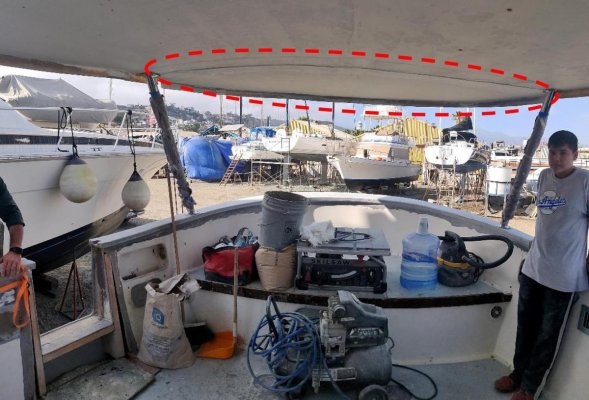Portage_Bay
Guru
- Joined
- Oct 19, 2015
- Messages
- 2,453
- Location
- United States
- Vessel Name
- Pacific Myst
- Vessel Make
- West Bay 4500
I'd probably have to open the overhead to determine that.Is there any kind of beam across the top of the post?
Hmmm.... I don't think so. If it is, it's gotta go.Stripper pole?
It's not quite on centerline but I understand your point. Not being centerline is what made me question it being structural or not.With no one left to ask, I've always assumed it was since it connects the center of the cabin top to the floor structure.
Thanks for that tip. I think bracing the salon deck from below is not difficult. The flybridge would be a different thing and not easily solved. This isn't yet my boat, I'm going back today for another look and may on further inspection put her under offer. I'll be going through everything I can get eyes on in detail.Deck Sagging has always been a problem in these boats as they age. Main salon floor will be the first place you notice it and then the flybridge floor will begin to fell soft. i would be suspect of what would happen by removing it.
That's a solvable problem. On first pass I see 3 ideas, listed in order of effort and cost. All 3 start with removing the desk on centerline aft.The other problem is you're fuel tanks are under the berths. 250 gal under each. Not only do you give up half your range, but you take 1500 lbs off the stern and the stern rides high. You'll have to add ballast to the stern or Water accumulates on the decks, when not underway.
Look under the floor panels, if support goes to keel the I would say it’s structural and then it could be time for a naval architect to protect you in the future
How about adding a structure to span between the beds and place a new mattress athwartships? You would gain some storage space below the structure. The tanks, pole and support all remain but you double the sleeping platform.

If you decide to do this in the future, consider a horizontal steel cross-beam to the cabin sides. You could box-in with wood if you prefer, but get the weight transferred to the cabin sides and you'll be good.
Picture below is aft deck on my Willard 36. Hard-top ended where the seam is visible (red dashed line) and has been extended. Weight of dinghy above had removed all camber - yard cut relief kerfs in top and re-bent camber in place and re-glassed. A SS angle-iron beam with about a 1-inch camber will span between the two posts shown to maintain the deck camber. Also not shown are two posts at aft to support new extension. Was only a few hundred bucks to have the cross-beam fabricated (for metal work, Mexico is not much cheaper than US due to materials cost).
View attachment 97839
That is very likely going to be the short term solution to get us out on the water and cruising.
Laminated wood might be better inside the cabin, though I would laminate in a form versus in-place and build knee braces to attach to the walls. May need to trim the form to match the camber to avoid gaps. Either way, inexpensive, sturdy, and would look nice. Cheaper than SS and would look better, though not quite as strong (but strong enough)I did a similar beam when I bought a bigger tender except mine was laminated in place wood.
